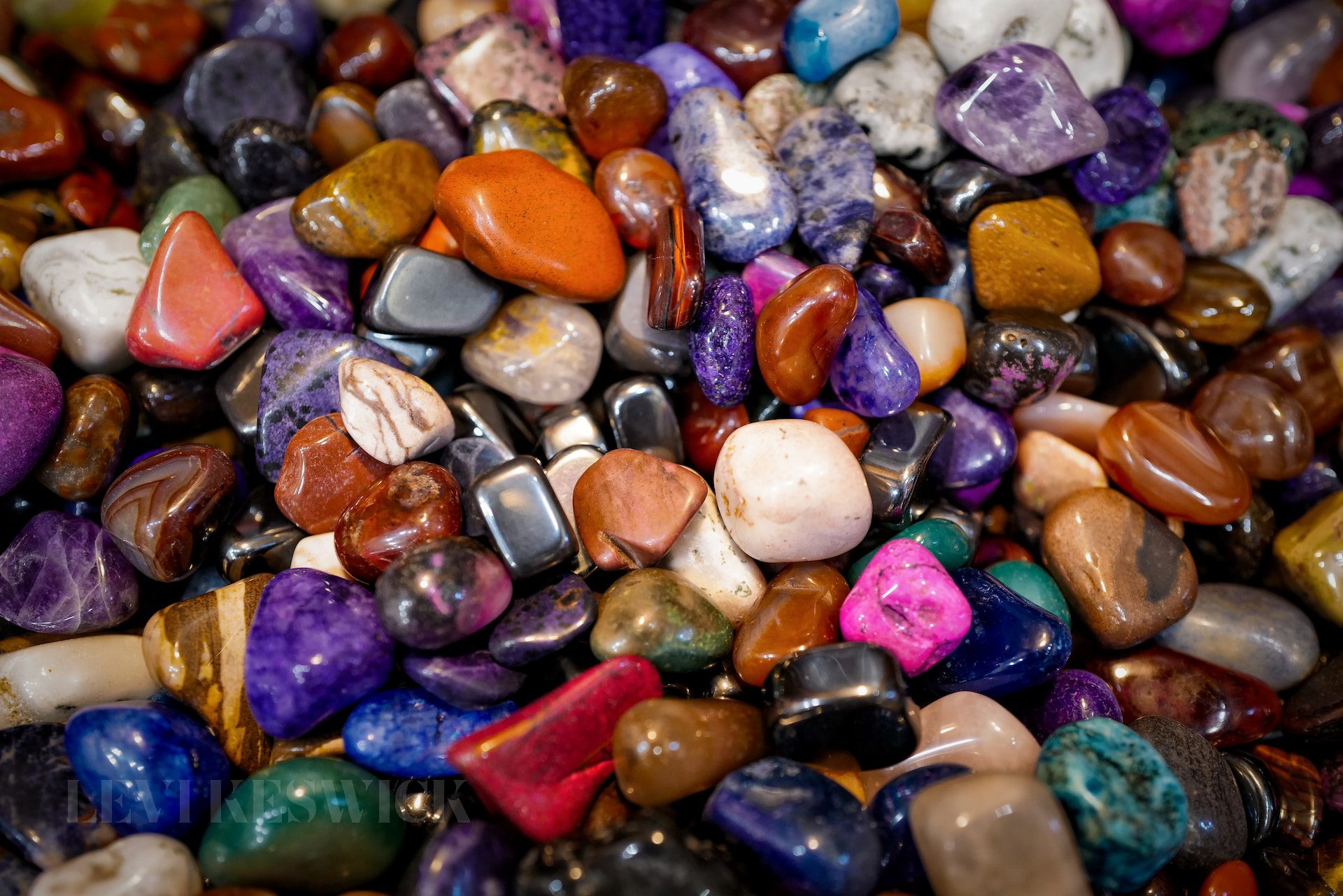Key takeaways:
- Green gemstones have a long-standing allure, symbolizing abundance, fortune, and success.
- From emeralds to tsavorites, green gemstones captivate with their beauty, rarity, and unique characteristics.
- Each green gemstone holds its own meaning and benefits, from healing properties to spiritual connections.
- Green gemstones, including affordable options like aventurine and bloodstone, offer a touch of elegance and flair to jewelry designs.
- Collectors and jewelry enthusiasts can find a wide range of green gemstones to suit their tastes and budgets.
Introduction
The world of gemstones is a treasure trove of natural wonders, and green gemstones stand out as some of the most captivating and sought-after treasures. Their rich hues and radiant allure have fascinated humanity for centuries, symbolizing prosperity, fortune, and the beauty of nature. From the legendary emeralds of ancient lore to the exquisite but rare tsavorites, green gemstones hold a special place in the realm of precious stones. In this article, we embark on a journey through 33 mesmerizing green gemstones, uncovering their meanings, benefits, and the enchantment they bring to the world of jewelry.
Alexandrite Cat’s Eye: A Playful Dance of Light
With its alluring play of light, Alexandrite Cat’s Eye stands out as a unique chrysoberyl gemstone. Changing colors under different lighting conditions, this captivating gem also exhibits a luminous streak, making it easily identifiable among green gemstones. Ranging from pale green to forest green, Alexandrite Cat’s Eye is found in various locations around the world, including Sri Lanka, Russia, Brazil, and Madagascar.
Benefits and Use: Alexandrite Cat’s Eye holds mystical healing properties, known to aid in improving eye problems, regulating blood sugar levels, and alleviating psychological distress.
Mohs Hardness Score: 8.5; suitable for regular wear and collecting.
Aventurine: Nature’s Glimmering Gift
Aventurine, a distinct type of quartz, boasts a translucent appearance and a shimmering surface that sets it apart from other quartz varieties. Most commonly found in pale to medium green shades, aventurine exhibits mineral vein-like inclusions in cream to toffee tones. While quartz is widely available, green aventurine is primarily sourced from India.
Benefits and Use: Aventurine supports the thymus gland and nervous system, aids in anxiety relief, and is worn as a pendant to ease sinus pressure and allergies.
Mohs Hardness Score: 6.5 to 7; suitable for collecting and occasional wear.
Bloodstone: Whimsical Beauty with a Touch of Red
Don’t let the name fool you—bloodstone is predominantly deep green, adorned with striking blood red hematite inclusions. This form of quartz exhibits splotchy or vein-like patterns and can be either translucent or opaque. Found in India, Madagascar, and California, bloodstone holds a whimsical charm among green gemstones.
Benefits and Use: Bloodstone has a rich history and is used for creating jewelry and statues. It is believed to remove mental and emotional blockages and is cherished in a wide range of casual men’s and women’s jewelry.
Mohs Hardness Score: 6.5 to 7; suitable for casual wear.
Chrome Diopside: Rare Beauty with Velvety Green
Chrome diopside, also known as chrome sphere, may not be widely recognized, but its stunning beauty is unparalleled. This translucent gemstone is a type of magnesium silicate, naturally displaying a velvety green hue. Abundant chromium deposits give chrome diopside its distinctive color variations, ranging from lighter to deeper tones. It is primarily mined in Eastern Siberia.
Benefits and Use: Chrome diopside enhances learning, love, and loyalty, making it an appealing choice for cocktail rings and faceted necklaces. Renowned jewelry designers often incorporate chrome diopside as stylish accents in their creations.
Mohs Hardness Score: 5.5 to 6.5; suitable for collecting but not recommended for daily wear.
Chrysocolla: Dreamy Green with Turquoise Vibes
For those who appreciate the allure of turquoise, chrysocolla offers a beautiful alternative. Exhibiting sea green hues and a marbled appearance, this gemstone displays a mesmerizing blend of sky blue, green, and other captivating tones. Composed of azurite, quartz, curprire, limonite, and malachite, chrysocolla is found in various locations, including the United States, Chile, Australia, France, England, and Zania.
Benefits and Use: Chrysocolla holds transformative properties, enhancing communication, learning, and love. It has been used by indigenous nations for emotional healing and immune system support.
Mohs Hardness Score: 2.5 to 3.5; suitable for healing beads.
Chrysoprase: A Springtime Gem of Vibrant Hues
Chrysoprase captures the essence of spring with its vibrant colors, ranging from apple green to aquamarine and yellow-green. This gemstone exhibits a vivid appearance, with occasional deposits of copper lending a mossy hue that can be mistaken for jade. Chrysoprase is an unusual form of quartz and is mainly mined in Queensland, Australia.
Benefits and Use: Crafted into elegant cocktail rings and pendants, the finest chrysoprase exudes elegance. As a healing crystal, it is believed to bring prosperity, fortune, and happiness.
Mohs Hardness Score: 7; suitable for occasional wear.
Ekanite: Radiant Green with Mystical Connections
Ekanite, a relatively new addition to the world of gemstones, was discovered in the 1950s in Sri Lanka. This rare green gemstone, composed of radioactive silicate mineral, showcases pale to medium green hues, with variations that can include yellow-green or even red. Ekanite’s chatoyancy effect creates bands of shimmering light across its surface. It is primarily mined in Sri Lanka, with modest deposits in Russia and parts of North America.
Benefits and Use: Due to its radioactive properties, ekanite is believed to be connected to spiritual and cosmic realms.
Mohs Hardness Score: 4.5 to 5.0; suitable for collecting.
Emerald: The Reigning Green Gemstone
Undoubtedly the most popular green gemstone, emeralds need no introduction. As one of the most valuable gemstones, they hold a special place as May’s birthstone and have a rich history woven through various cultures. Emeralds range in color from yellowish-green (Brazilian) to coveted bluish-green (Colombian or Zambian), with medium to sage green variations (Trapiche). The most valuable emeralds possess saturated green hues with blue undertones and originate from Colombia.
Benefits and Use: Emeralds are prized for birthstone jewelry, fine jewelry, and collecting. They are associated with good luck, fortune, and wisdom.
Mohs Hardness Score: 7.5 to 8; suitable for fine jewelry.
Gaspeite: A Rare Nickel Carbonate Gemstone
Gaspeite, a rare form of nickel carbonate, was discovered in Quebec in 1966. Although it does not have a long history like many other green gemstones, gaspeite’s yellowish-green to vibrant green hues, accented with vein-like brown inclusions and mottling, make it a unique and captivating gemstone. Its surface can range from dull to vitreous, with occasional streaks of white.
Benefits and Use: Gaspeite holds significance for Aboriginal people in Australia and is believed to accelerate weight loss and support the heart.
Mohs Hardness Score: 4.5 to 5; suitable for healing.
Green Amethyst: Subtle Elegance in Pale Green
Green amethyst, though not as popular as its lavender counterpart, possesses its own beauty and charm. Translucent with a pale green hue, green amethyst contains citrine crystals. Iron compounds contribute to its unique green coloration, and its membership in the quartz family explains some of its properties. Most naturally occurring green amethyst is sourced from Brazil.
Benefits and Use: Green amethyst is used in gemstone jewelry, although most available on the market undergoes artificial heat treatment. It is useful for supporting meditation and emotional and spiritual healing.
Mohs Hardness Score: 7; suitable for occasional jewelry.
Green Apatite: The Asparagus Stone
Green apatite, also known as the “asparagus stone,” is a member of the phosphate family. It showcases yellow-green to medium green hues and exhibits a vitreous luster with hexagonal or tubular prisms. This light to pale green gemstone is found in Mexico, Brazil, and Myanmar.
Benefits and Use: Green apatite possesses dual-action properties, dispelling tumultuous thoughts and enhancing spiritual and emotional clarity.
Mohs Hardness Score: 5; suitable for collecting.
Green Chrysoberyl: Twinned Crystals with Chatoyant Beauty
Green chrysoberyl dazzles with its twinned or star crystals, displaying yellow-green to medium green hues. Its chatoyant effect creates bands of light across the transparent gemstone. As a form of beryllium, green chrysoberyl is sourced from Sri Lanka, Brazil, and Tanzania, with the latter producing a mint green variety.
Benefits and Use: Due to its rarity, green chrysoberyl is most coveted by collectors. In Asian culture, it is believed to protect against the Evil Eye.
Mohs Hardness Score: 8.5; usually reserved for collecting.
Green Diamond: Exquisite Rarity in Green
While colorless diamonds are universally admired, green diamonds stand out as some of the most expensive and extraordinary gemstones. The exposure to radiation under the Earth’s crust lends these diamonds an elegant icy to deep green hue. Green diamonds possess all the characteristics of white and colorless diamonds but are incredibly rare. They are mined in South America, Brazil, and Venezuela.
Benefits and Use: Green diamonds are prized by collectors and are used for fine jewelry. They symbolize strength, longevity, and abundance.
Mohs Hardness Score: 10; suitable for engagement rings and fine jewelry.
Green Garnet: A Splendid Display of Vivid Green
Green garnet, a member of the silicate family, shares its birthstone designation with its more well-known red counterpart, representing the month of January. Exhibiting shades from opaque to transparent, green garnet displays yellow and green inclusions, with a medium green to blue-green body. Green garnet is sourced from Kenya and Madagascar.
Benefits and Use: Green garnet is used to create bracelets, brooches, pendant necklaces, and even for celebrating anniversaries—although less commonly than red garnet. It is believed to improve energy and awareness.
Mohs Hardness Score: 6.5 to 7; suitable for collecting and occasional jewelry.
Green Sapphire: Rarity Beyond the Blues
Green sapphires, often overshadowed by their blue counterparts, possess their own allure and rarity. Ranging from yellow-green to olive green or medium green, green sapphires can have undertones of pale or yellowish-green, with occasional tints of blue. While not as common as blue sapphires, they are mined in Sri Lanka, Tanzania, Australia, Madagascar, and Montana.
Benefits and Use: Green sapphires are ideal for formal and gemstone jewelry, thanks to their excellent faceting, beauty, and durability. They are also believed to facilitate emotional healing.
Mohs Hardness Score: 9; suitable for everyday wear and collecting.
Green Zircon: Pure Green with Radiant Charisma
Green zircon displays a pure to olive green hue, which may deepen over time. Its green coloration is attributed to radioactive deposits, setting it apart from other types of zircon. Green zircon is usually found in round pebbles and is primarily sourced from Madagascar and Zambia. Many natural green zircon gemstones require heat treatment to enhance their naturally cloudy appearance.
Benefits and Use: Zircon is used for sand casting and mold coating, while green zircon is commonly used for collecting and healing purposes. It is believed to aid meditation and bring prosperity.
Mohs Hardness Score: 6 to 7.5; suitable for collecting and occasional wear.
Hiddenite: The Rare Gem of Lustrous Greens
Hiddenite, a light green to emerald green variety of spodumene, enchants with its multidimensional hues, which can include mint or yellow-green tints. As the fourth rarest gemstone in the world, hiddenite is exceptionally scarce, with its only known source being Charlotte, North Carolina.
Benefits and Use: Hiddenite is highly sought after by collectors and is believed to aid in addiction recovery.
Mohs Hardness Score: Varies; suitable for collecting.
Conclusion: Embracing the Evergreen Beauty of Forest Green Crystals
The realm of green gemstones is a dazzling landscape of enchantment and beauty. From the timeless elegance of emeralds to the lesser-known treasures like ekanite and hiddenite, each green gemstone tells its own story and possesses unique qualities. These remarkable gemstones not only enhance jewelry designs with their captivating colors but also hold deeper meanings and benefits, from healing properties to spiritual connections. Whether you seek the rarity of a green diamond or the affordability of aventurine, there is a forest of green gemstones waiting to be discovered, offering a touch of elegance, charm, and natural splendor to your jewelry collection.







